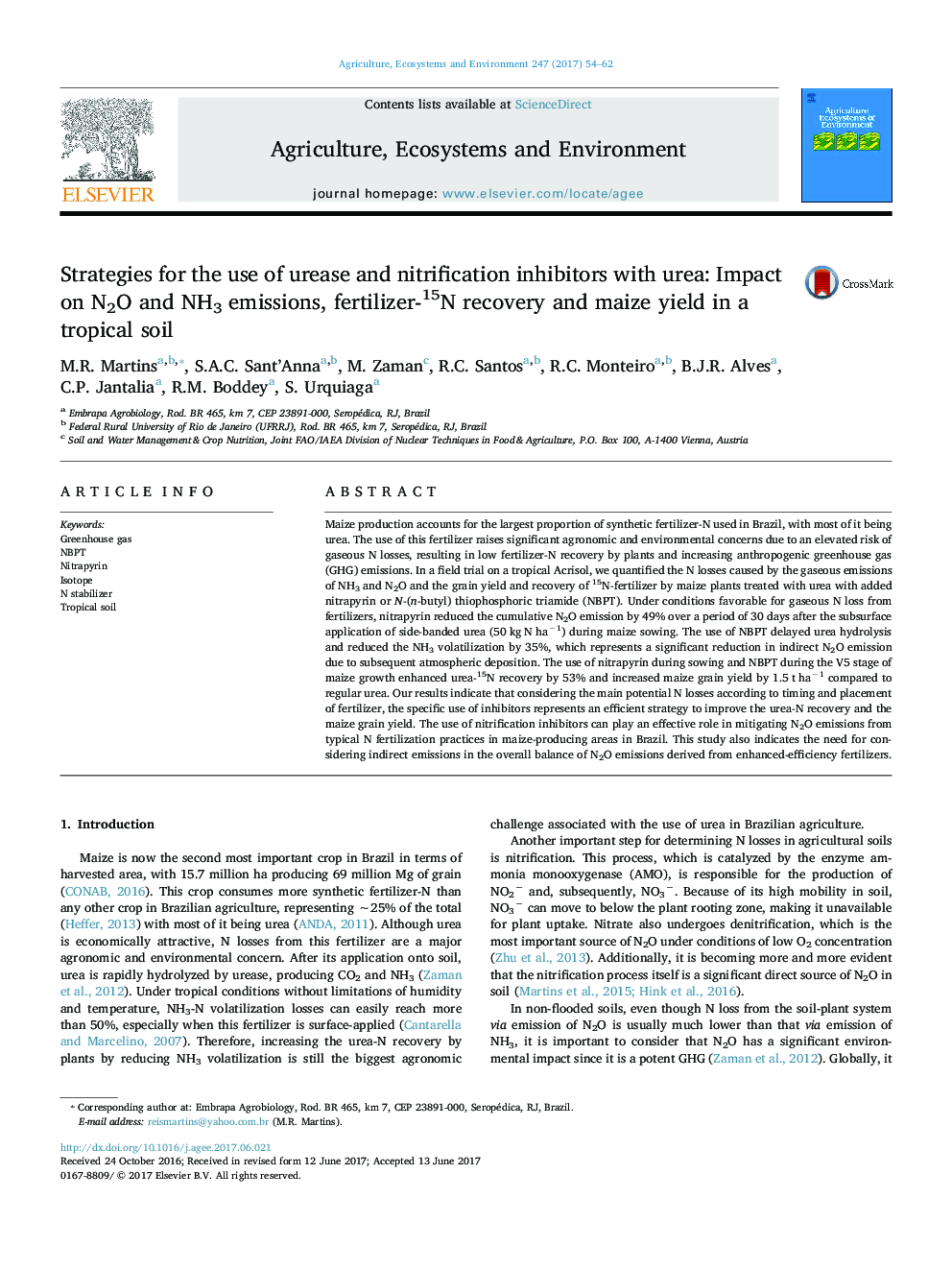| Article ID | Journal | Published Year | Pages | File Type |
|---|---|---|---|---|
| 5537977 | Agriculture, Ecosystems & Environment | 2017 | 9 Pages |
Abstract
Maize production accounts for the largest proportion of synthetic fertilizer-N used in Brazil, with most of it being urea. The use of this fertilizer raises significant agronomic and environmental concerns due to an elevated risk of gaseous N losses, resulting in low fertilizer-N recovery by plants and increasing anthropogenic greenhouse gas (GHG) emissions. In a field trial on a tropical Acrisol, we quantified the N losses caused by the gaseous emissions of NH3 and N2O and the grain yield and recovery of 15N-fertilizer by maize plants treated with urea with added nitrapyrin or N-(n-butyl) thiophosphoric triamide (NBPT). Under conditions favorable for gaseous N loss from fertilizers, nitrapyrin reduced the cumulative N2O emission by 49% over a period of 30 days after the subsurface application of side-banded urea (50 kg N haâ1) during maize sowing. The use of NBPT delayed urea hydrolysis and reduced the NH3 volatilization by 35%, which represents a significant reduction in indirect N2O emission due to subsequent atmospheric deposition. The use of nitrapyrin during sowing and NBPT during the V5 stage of maize growth enhanced urea-15N recovery by 53% and increased maize grain yield by 1.5 t haâ1 compared to regular urea. Our results indicate that considering the main potential N losses according to timing and placement of fertilizer, the specific use of inhibitors represents an efficient strategy to improve the urea-N recovery and the maize grain yield. The use of nitrification inhibitors can play an effective role in mitigating N2O emissions from typical N fertilization practices in maize-producing areas in Brazil. This study also indicates the need for considering indirect emissions in the overall balance of N2O emissions derived from enhanced-efficiency fertilizers.
Related Topics
Life Sciences
Agricultural and Biological Sciences
Agronomy and Crop Science
Authors
M.R. Martins, S.A.C. Sant'Anna, M. Zaman, R.C. Santos, R.C. Monteiro, B.J.R. Alves, C.P. Jantalia, R.M. Boddey, S. Urquiaga,
